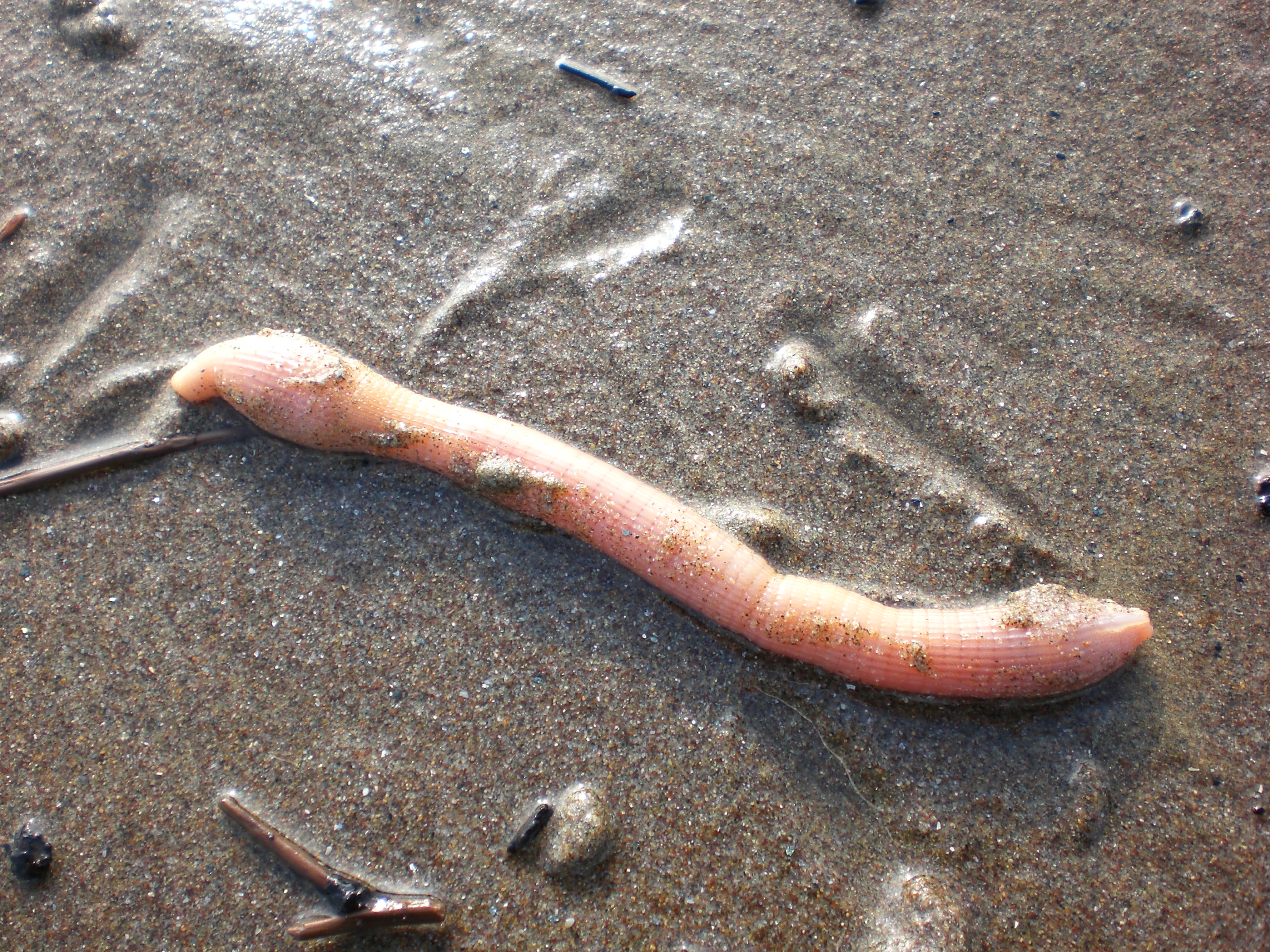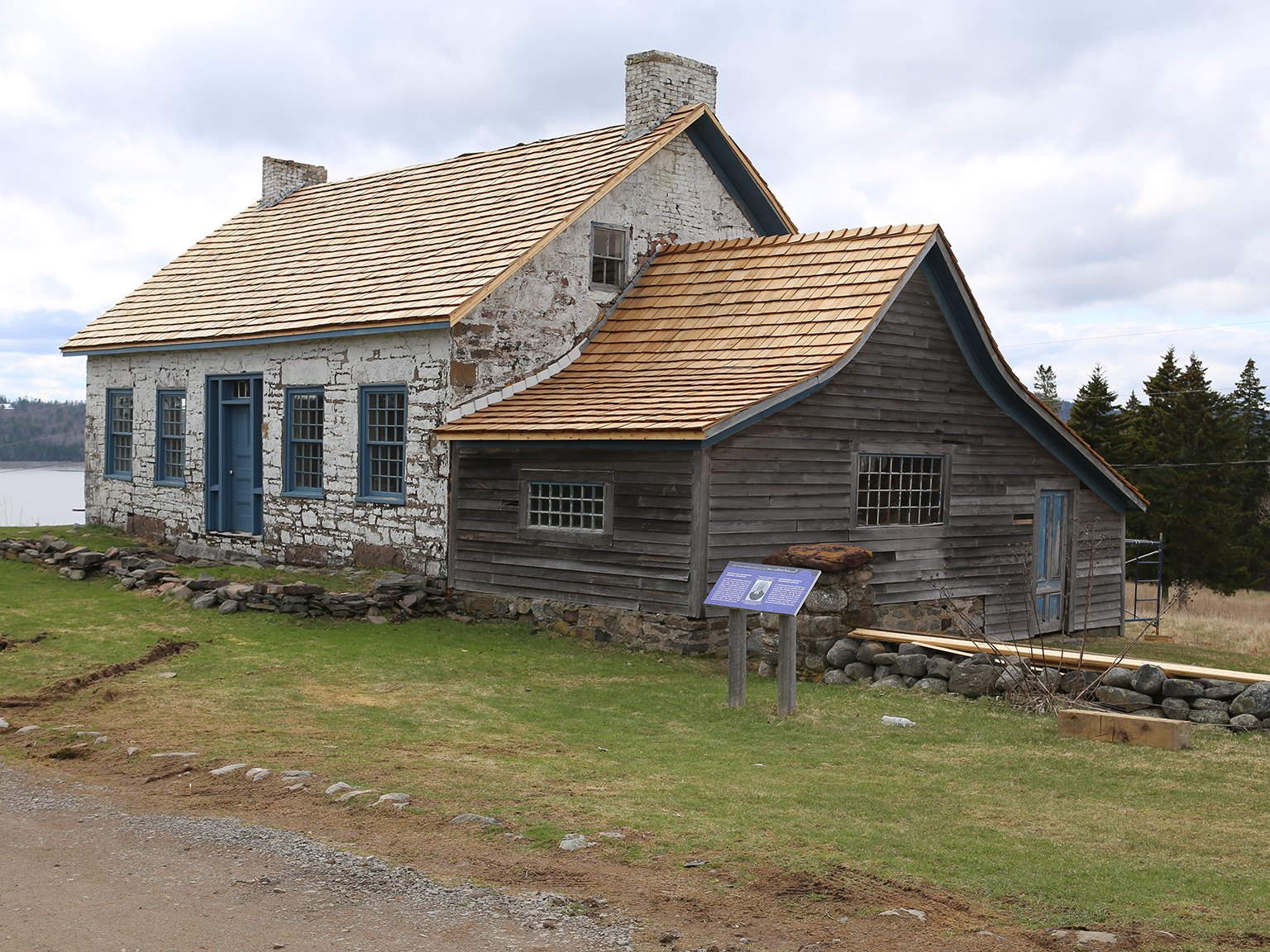|
Phascolopsis Gouldii
''Phascolopsis gouldii'' is a species of unsegmented benthic marine worm, also known as a peanut worm or star worm. It lives in burrows in muddy sand in shallow waters off North America. Description ''Phascolopsis gouldii'' can reach thirty centimetres long and is a smooth slender cylindrical shape. The body is pinkish and divided into an anterior introvert and a posterior trunk. The introvert is about one quarter of the length of the body and can be retracted inside it by turning outside in. This is done by the contraction of two pairs of large introvert retractor muscles which extend from the body wall of the trunk to near the mouth which is at the tip of the introvert in the centre of the oral disc. This is surrounded by a ring of short tentacles that are used for feeding and in gas exchange. They are pink inside due to the presence of the pigment hemerythrin used in oxygen transport. The anus is on a small mound where the trunk and introvert join. The trunk is covered by a thi ... [...More Info...] [...Related Items...] OR: [Wikipedia] [Google] [Baidu] |
Animal
Animals are multicellular, eukaryotic organisms in the Kingdom (biology), biological kingdom Animalia. With few exceptions, animals Heterotroph, consume organic material, Cellular respiration#Aerobic respiration, breathe oxygen, are Motility, able to move, can Sexual reproduction, reproduce sexually, and go through an ontogenetic stage in which their body consists of a hollow sphere of Cell (biology), cells, the blastula, during Embryogenesis, embryonic development. Over 1.5 million Extant taxon, living animal species have been Species description, described—of which around 1 million are Insecta, insects—but it has been estimated there are over 7 million animal species in total. Animals range in length from to . They have Ecology, complex interactions with each other and their environments, forming intricate food webs. The scientific study of animals is known as zoology. Most living animal species are in Bilateria, a clade whose members have a Symmetry in biology#Bilate ... [...More Info...] [...Related Items...] OR: [Wikipedia] [Google] [Baidu] |
Sipuncula
The Sipuncula or Sipunculida (common names sipunculid worms or peanut worms) is a class containing about 162 species of unsegmented marine annelid worms. The name ''Sipuncula'' is from the genus name ''Sipunculus'', and comes from the Latin ''siphunculus'' meaning a "small tube". Sipuncula was once considered a phylum, but was demoted to a class of Annelida, based on recent molecular work. Sipunculans vary in size but most species are under in length. The body is divided into an unsegmented, bulbous trunk and a narrower, anterior section, called the "introvert", which can be retracted into the trunk. The mouth is at the tip of the introvert and is surrounded in most groups by a ring of short tentacles. With no hard parts, the body is flexible and mobile. Although found in a range of habitats throughout the world's oceans, the majority of species live in shallow water habitats, burrowing under the surface of sandy and muddy substrates. Others live under stones, in rock crevic ... [...More Info...] [...Related Items...] OR: [Wikipedia] [Google] [Baidu] |
Golfingiidae
Golfingiidae is a family of peanut worms. Species ''Golfingia'' * '' Golfingia anderssoni'' (Théel, 1911) * '' Golfingia birsteini'' Murina 1973 * '' Golfingia capensis'' (Teuscher, 1874) * '' Golfingia elongata'' (Keferstein, 1862) * '' Golfingia iniqua'' (Sluiter, 1912) * '' Golfingia margaritacea'' (Sars, 1851) * '' Golfingia mirabilis'' Murina 1969 * '' Golfingia muricaudata'' (Southern, 1913) * '' Golfingia pectinatoides'' Cutler and Cutler, 1979 * '' Golfingia vulgaris'' (de Blainville, 1827) ''Nephasoma'' * '' Nephasoma abyssorum'' (Koren and Danielssen, 1875) * ''Nephasoma bulbosum'' (Southern, 1913) * '' Nephasoma capilleforme'' (Murina, 1973) * '' Nephasoma confusum'' (Sluiter, 1902) * ''Nephasoma constricticervix'' (Cutler, 1969) * ''Nephasoma constrictum'' (Southern, 1913) * ''Nephasoma cutleri'' (Murina, 1975) * ''Nephasoma diaphanes'' (Gerould, 1913) * ''Nephasoma eremita'' (Sars, 1851) * ''Nephasoma filiforme'' (Sluiter, 1902) * ''Nephasoma flagriferum'' (Selenka, ... [...More Info...] [...Related Items...] OR: [Wikipedia] [Google] [Baidu] |
Louis François De Pourtalès
Louis François de Pourtalès (4 March 1824 – 18 July 1880) was a France, Franco-United States, American naturalist, born at Neuchâtel, Switzerland. Early life and education Pourtales was born on 4 March 1824 and regarded as a Switzerland, Swiss representative of an old family with linage in France, Prussia, and Bohemia. After the death of his father, he succeeded to the title of Count and inherited a fortune that enabled his scientific pursuits. He was educated as an engineer. He was regarded as an expert in mathematics, physics and zoology, and had interest in literature, poetry and history. Death Pourtales died on 18 July 1880 from an unspecified "obscure internal disease". Career Pourtales was a pupil of Louis Agassiz, whom he accompanied in 1840 on Glacier, glacial expeditions in the Alps and, in 1847, followed Agassiz to immigrate into the United States. In 1848, he entered government service with the U.S. National Geodetic Survey, Coast Survey and became profoundly ... [...More Info...] [...Related Items...] OR: [Wikipedia] [Google] [Baidu] |
Hemerythrin
Hemerythrin (also spelled haemerythrin; grc, αἷμα, haîma, blood, grc, ἐρυθρός, erythrós, red) is an oligomeric protein responsible for oxygen (O2) transport in the marine invertebrate phyla of sipunculids, priapulids, brachiopods, and in a single annelid worm genus, ''Magelona''. Myohemerythrin is a monomeric O2-binding protein found in the muscles of marine invertebrates. Hemerythrin and myohemerythrin are essentially colorless when deoxygenated, but turn a violet-pink in the oxygenated state. Hemerythrin does not, as the name might suggest, contain a heme. The names of the blood oxygen transporters hemoglobin, hemocyanin, hemerythrin, do not refer to the heme group (only found in globins), instead these names are derived from the Greek word for blood. Hemerythrin may also contribute to innate immunity and anterior tissue regeneration in certain worms. O2 binding mechanism The mechanism of dioxygen binding is unusual. Most O2 carriers operate via formation of ... [...More Info...] [...Related Items...] OR: [Wikipedia] [Google] [Baidu] |
Integument
In biology, an integument is the tissue surrounding an organism's body or an organ within, such as skin, a husk, shell, germ or rind. Etymology The term is derived from ''integumentum'', which is Latin for "a covering". In a transferred, or figurative sense, it could mean a cloak or a disguise. In English, "integument" is a fairly modern word, its origin having been traced back to the early seventeenth century; and refers to a material or layer with which anything is enclosed, clothed, or covered in the sense of "clad" or "coated", as with a skin or husk. Botanical usage In botany, the term "integument" may be used as it is in zoology, referring to the covering of an organ. When the context indicates nothing to the contrary, the word commonly refers to an envelope covering the nucellus of the ovule. The integument may consist of one layer (unitegmic) or two layers (bitegmic), each of which consisting of two or more layers of cells. The integument is perforated by a pore, th ... [...More Info...] [...Related Items...] OR: [Wikipedia] [Google] [Baidu] |
Cobscook Bay
Cobscook Bay is located in Washington County in the state of Maine. It opens into Passamaquoddy Bay, within the Bay of Fundy. Cobscook Bay is immediately south of the island city of Eastport, the main island of which (Moose Island) straddles the two bays. In the 1930s, Cobscook Bay was part of the aborted Passamaquoddy Bay Tidal Power Project (a.k.a., ''Quoddy Dam Project'') to generate electricity from its large tidal range. Geography Cobscook Bay is a large bay in Washington County, Maine that opens into Passamaquoddy Bay within the Bay of Fundy through a relatively narrow opening. It is about long and 10 wide and has a long, convoluted coastline with many islands. The mouth of the bay is bracketed by the island city of Eastport, which is principally on Moose Island, and by the town of Lubec. Other townships around the bay are Perry, Pembroke, Dennysville, Edmunds, and Tresscott. There are about 7,000 people living in the nine communities in the area, many of whom are fi ... [...More Info...] [...Related Items...] OR: [Wikipedia] [Google] [Baidu] |
Gulf Of Maine
The Gulf of Maine is a large gulf of the Atlantic Ocean on the east coast of North America. It is bounded by Cape Cod at the eastern tip of Massachusetts in the southwest and by Cape Sable Island at the southern tip of Nova Scotia in the northeast. The gulf includes the entire coastlines of the U.S. states of New Hampshire and Maine, as well as Massachusetts north of Cape Cod, and the southern and western coastlines of the provinces and territories of Canada, Canadian provinces of New Brunswick and Nova Scotia, respectively. The gulf was named for the adjoining English colonial Province of Maine, which was in turn likely named by early explorers after the Maine (province), province of Maine in France. Massachusetts Bay, Penobscot Bay, Passamaquoddy Bay, and the Bay of Fundy are all arms of the Gulf of Maine. Geography and hydrography The Gulf of Maine is a roughly rectangular depression with a surface area of around , enclosed to the west and north by the North American mainland ... [...More Info...] [...Related Items...] OR: [Wikipedia] [Google] [Baidu] |
Minister's Island
Ministers Island is an historic Canadian island in New Brunswick's Passamaquoddy Bay near the town of St. Andrews. The island stands several hundred metres offshore immediately northeast of the town and is a geographical novelty in that it is accessible at low tide by a wide gravel bar suitable for vehicular travel. Ministers Island became famous in the last decade of the nineteenth century as the summer home of Sir William Van Horne, the president of the Canadian Pacific Railway. By the time of Van Horne's death in 1915, the island had been transformed into a small Xanadu, sporting a sandstone mansion furnished in the most lavish late Edwardian manner, manicured grounds, scenic roads, greenhouses turning out exotic fruits and vegetables, as well as a breeding farm producing prize-winning Clydesdale horses and Lakenvelder cattle. It was the most spectacular of many palatial summer homes in St. Andrews, which since the creation of the St. Andrews Land Company in 1888 and the ... [...More Info...] [...Related Items...] OR: [Wikipedia] [Google] [Baidu] |
Bay D'Espoir
Bay d'Espoir ( ) is an arm of Hermitage Bay in the Gulf of Saint Lawrence, located on the south coast of Newfoundland. Communities in Bay d'Espoir include: Milltown-Head of Bay d'Espoir, Morrisville, St. Alban's, St. Joseph's Cove, St. Veronica's and Miawpukek. The Miawpukek First Nation reserve of Samiajij Miawpukek (Conne River) is located in Bay d'Espoir. Name The name appears in printed form with many different spellings, some of which are: Bay D' Espoir/e, Bay of Despair, Bay Despoir/e, Baie D' Espoir/e, Baie Despair and Baie Despoir/e. Bay d'Espoir is often translated locally either as Bay of Hope or Bay of Despair. The name Bay of Despair may be an English corruption of the French name Baie d'Espoir. However, the French cartographer Bellin referred to the bay as "Baie du Desespoir" on his 1743 map "Carte de l'Isle de Terre-Neuve". Therefore, the actual sequence may have been from "Baie du Desespoir" to the English literal translation "Bay of Despair", which appears as ... [...More Info...] [...Related Items...] OR: [Wikipedia] [Google] [Baidu] |




